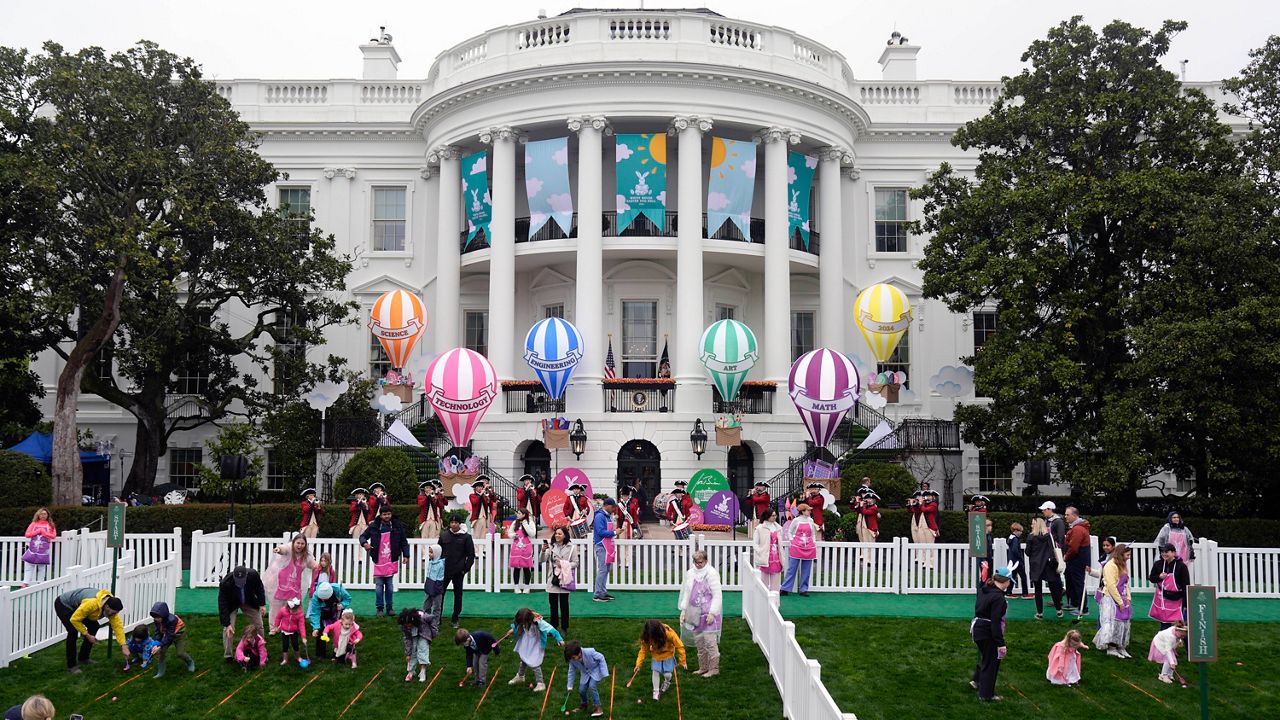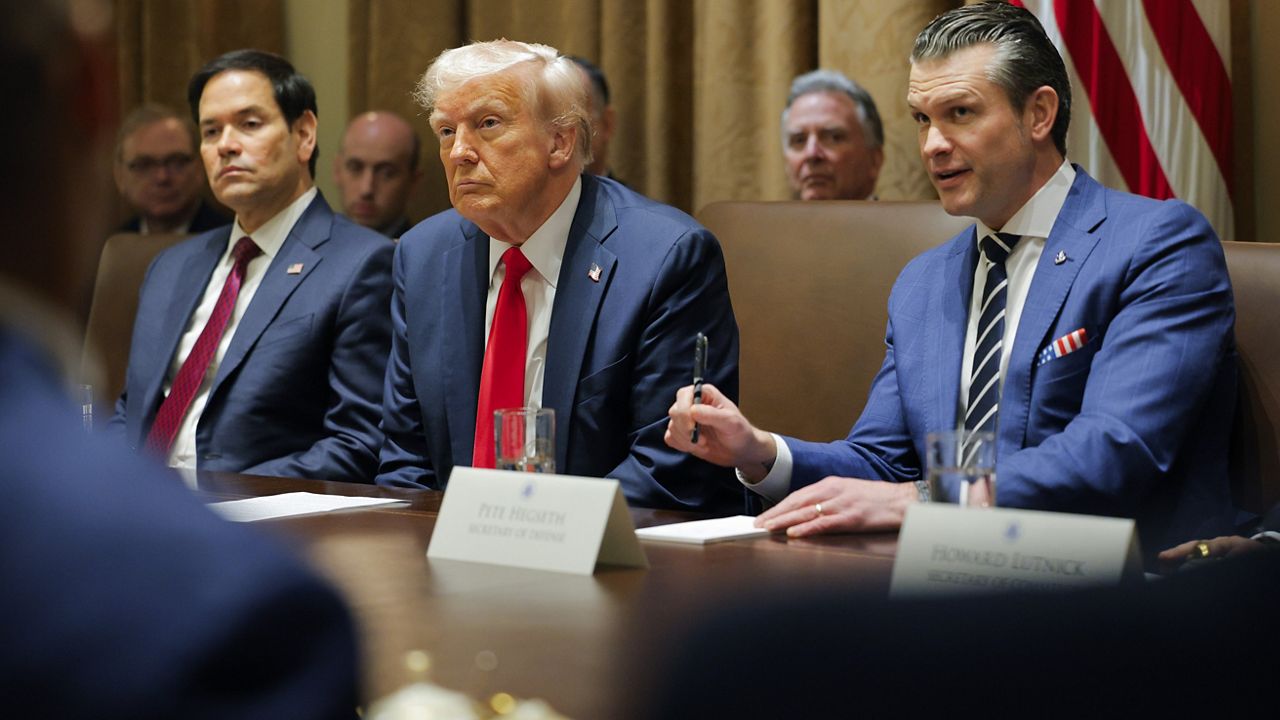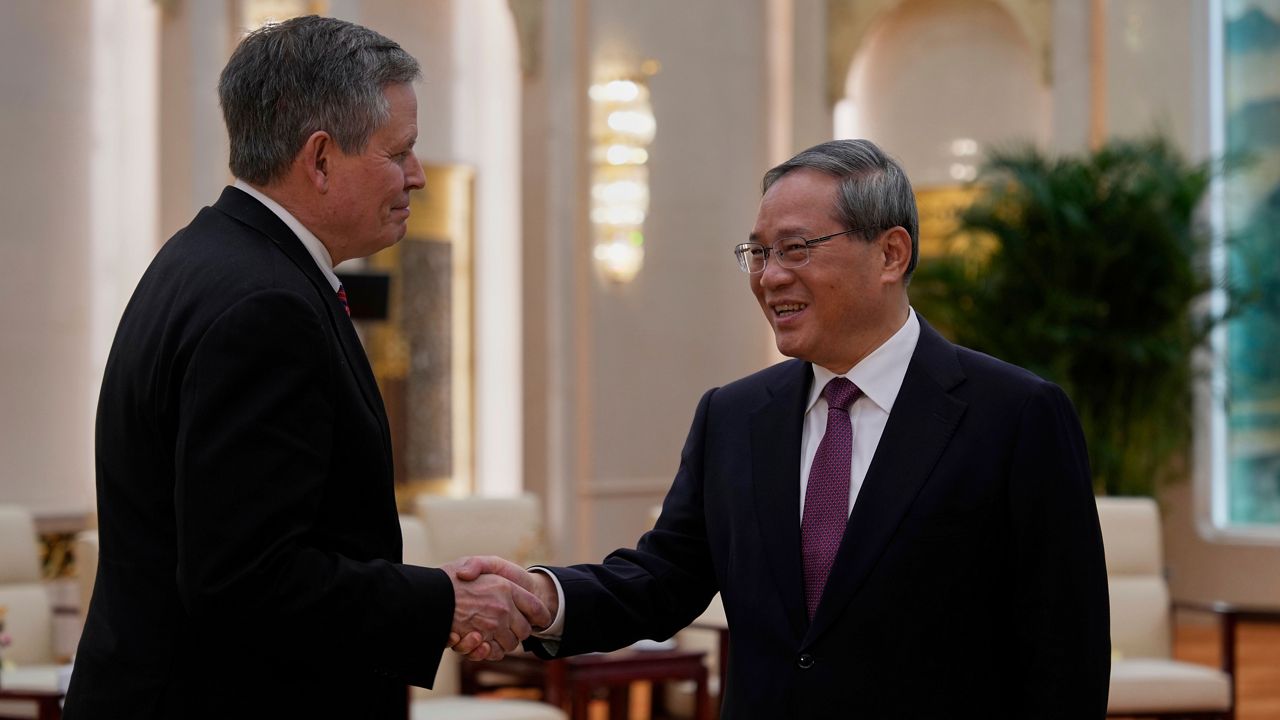Election Day is in less than seven weeks, evidenced by the flurry of political ads and mailers sent out and put up across the country as candidates feverishly try to get their messages out.
This year, one social media platform is getting special attention in the political sphere, even at the risk of drumming up snark – and worse – from those scrolling by.
Enter TikTok, the video-sharing app best known for trends, music and dancing. But increasingly, individuals running for political office have used TikTok to spread their message to a younger audience.
“Most TikTok users are younger, particularly compared to Twitter or Facebook,” Maggie Macdonald, a postdoctoral fellow at the NYU Center for Social Media and Politics, told Spectrum News. “And so it is a way for politicians to try and reach those people in a way that they may otherwise not be able to.”
According to recent data, around 60% of TikTok’s 80 million monthly active users in the United States are between the ages of 16 - 24, and 80% are between the ages of 16-34. That means a far greater share of TikTok users belong to Gen Z than on, say, Facebook, where just 23% of active users are between the ages of 13 - 24.
While a few political videos have gone viral, TikTok doesn’t draw nearly as many messages from candidates as older social media platforms.
Why? For one, putting something compelling on TikTok requires time and practice – shooting a video; a bit of editing and adding memes and images. Using trending audios or sounds can also increase views.
“It's easier to write a 280 character tweet than it is to make a really engaging, dynamic video,” Macdonald posited.
And of course, it’s things like dancing people want to see. That – and a cute kid with corn – have millions of people entranced, wasting time, or both.
But that hasn’t stopped some politicians from getting in on the fun. The race for Pennsylvania’s Senate seat being vacated by Republican Sen. Pat Toomey is just one example of a battle in which the candidates are hoping clicks translate to votes.
In the Keystone State, Republican Dr. Mehmet Oz – a retired cardiothoracic surgeon best known for his decade-long television program “The Dr. Oz Show” – is running against John Fetterman, Pennsylvania’s current lieutenant governor and a longtime public servant at various levels of government.
Their online back-and-forth has gained notoriety across a variety of platforms, but perhaps the most viral instance concerned a resurfaced video Oz posted to his TikTok account in mid-April. At the time, Oz railed against the high prices of vegetables he intended to use for "crudité," a French word for a vegetable appetizer plate. He also called the store "Wegner's," an apparent mashup of grocery chains Wegmans and Redner's, in the video that now has 4.4 million views – among the top-most-viewed videos shared to the account since Oz announced his candidacy last November.
In response, Fetterman shared a video poking fun at Oz’s statements, showcasing individuals dressed up as broccoli and holding signs emblazoned with the phrases “I’m afraid Dr. Oz is going to dip me in salsa” and “Veggies for Fetterman.”
That response video has a fraction of the views on Oz’s original TikTok – 153,000 compared to 4.4 million – though a separate video Fetterman made (which used a trending audio on the platform) to poke fun at Oz’s crudité comment garnered 1.1 million views.
There are an increasing number of high-profile political figures on TikTok, some of whom are gunning for highly-competitive Senate seats.
Take, for instance, Rep. Tim Ryan, a Democrat running for Senate in Ohio against J.D. Vance, who has gained the endorsement of former President Donald Trump.
Ryan’s TikTok, while not yet nearing the amount of likes garnered by either Fetterman or Oz, is filled with trending audios poking fun at Vance’s past criticism of Trump, celebrating Ryan’s time fighting for Ohioans in Congress and lauding workers across the Buckeye State (to the tune of a remixed version of the Corn Kid’s words, of course).
Vance does not appear to be on TikTok.
Then there’s Rep. Val Demings, a Democrat running for Florida’s Senate seat against Marco Rubio. Her TikTok presence – in terms of likes and followers – rivals that of John Fetterman, and she frequently posts videos of campaign events and jabs at Rubio to her account.
Rubio does not have a TikTok account, and has targeted Demings for her use of the social media app.
“While Marco Rubio fights back against Communist China, Val Demings is dancing on TikTok,” a recent campaign ad from his team said in part.
TikTok is Chinese-owned, and former President Trump moved to shut it down – which is one reason why you might not see GOP candidates on TikTok as frequently as Democrats.
Still, at least one Republican running for Congress in California said his party should embrace the platform more..
“I've noticed when I go live I'm seeing a different level of support. There's a lot of Republicans that are on there,” Brian Hawkins, a Republican candidate for the House of Representatives, told Spectrum News. “You have to think about it for a million views and to get shared. These are like minded people. So there are a lot of Republicans. I think it's a missed opportunity.”
It does not appear his Democratic rival, Rep. Raul Ruiz, is on TikTok. His campaign office did not return a request for comment.
It’s not only candidates for office using the newer social media platform to spread their message. TikTok has become a home for serious issues too, including those fighting both for and against abortion rights.
“Roe's on the ballot this year,” Sam Shlafstein of Gen-Z For Change told Spectrum News. “And I think that's really an important talking point because I think as we've seen what's sort of like a lot of midterm production predictions, Republicans are really hurting from the fall of Roe.”
Earlier this year, the Democratic National Committee launched its own TikTok account, which it has used to elevate candidates in various state races, raise awareness about voter registration, push forward President Joe Biden’s agenda and more.
But it remains to be seen if TikTok views will translate to votes. Anecdotally, such was not the case for one popular candidate on the platform: Ken Russell, who was running for the Democratic nomination for a House seat in Florida, was an early and often TikTok user, and demonstrated an impressive understanding of trends on the app.
His account has 11.9 million likes, more than the pages of Fetterman, Oz, Demings and Ryan combined. Still, Russell lost the primary for House District 27 in Florida to Maria Elvira.
As of yet, there is no clear link between a candidate’s TikTok presence and their overall performance in their race. In the two aforementioned races where the Democrat has a TikTok presence and the Republican does not (i.e. Ohio and Florida), the candidates are in close competition; data shows Rubio likely has an edge over Demings, while Ryan and Vance grapple to take the lead in polls.









